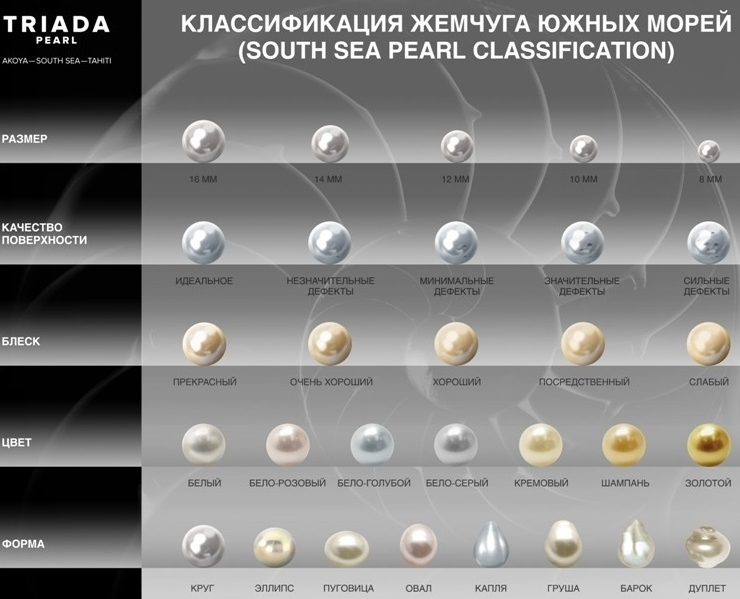
Types of pearls
Contents:
Perhaps the variety of pearls is a whole story that includes a variety of stones, which a simple layman is sometimes unable to understand. There are no pearls: natural, cultured, baroque, conch, kasumi, keshi, blister and others. Today we will try to understand this issue so that everyone who is at least somehow interested in pearl jewelry understands what they are offered in jewelry stores.
What is pearl: varieties by origin
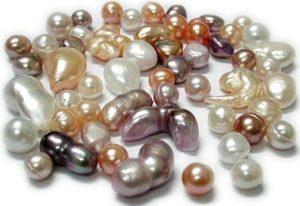
Pearls are a unique natural stone. Very widely used as an insert in jewelry. Jewelry with pearls has always been considered a luxury and a sign of wealth and power. However, since natural pearls are considered quite rare, scientists and innovators have come up with other ways to extract them, thanks to which new varieties of pearls have appeared. Let's take a closer look at the main ones.
Natural pearls
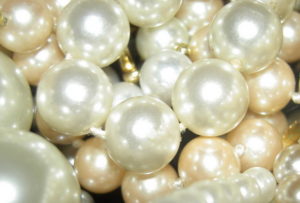
This is a natural material, the extraction of which is carried out in natural conditions. Here pearls are divided into two types:
- nautical;
- river.
Even from the names it is clear that one of them is extracted from river mollusks, and the second from sea ones. They rise from the bottom, open and remove the stone. This method of extraction is associated with a huge risk not only for health, but also for life.
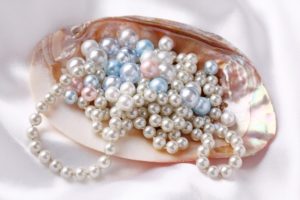
This subgroup can also be divided into varieties. For example, sea pearls can be of the following types:
- Akoya. Mollusk - Pinctada martensii. It is grown mainly in China and Japan. Pearls are round, delicate and warm shades: blue, beige, pink. Sizes can be different: from 2 to 10 mm. Such stones are characterized by high quality, and therefore - high cost.

- Southern. Mollusk - Pinctada maxima. The birthplace of the stone is the Philippines, Austria, Indonesia. The size of pearls is impressive: up to 20 mm. Shades of cream, white, golden tones. The shape is quite bizarre: a drop, a pear, a button, a circle.

- Tahitian. Mollusk - Pinctada margaritifera. No, this pearl is mined not only in Tahiti. But it is there that the main deposit is located. Size: from 8 to 15 mm. Fantasy colors: black with tints of blue, purple, green, gray. Today it is the most popular stone.

Cultured pearls
Contrary to popular belief that these pearls are artificial, we can safely say: this is not at all the case! Such pearls are formed in the same way in the shell of a mollusk, only their habitat is not natural reservoirs, but artificially created by man. The process of pearl formation is similar to natural, but the foreign body, due to which the stone is formed, is placed inside the mollusk not by natural phenomena, but by a person. Next, the sink is placed in a special container and waits in the wings.
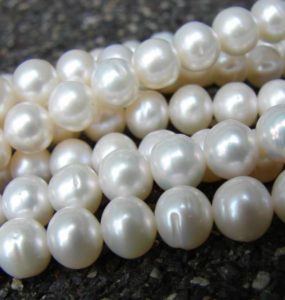
Such pearl farms are quite common, but such a business is associated with a very high risk, because it is completely unknown whether the pearl will begin to form inside the shell, or the mollusk will not perceive it in its mother-of-pearl layers.
90% of all pearls are the cultured variety.
Cotton pearl
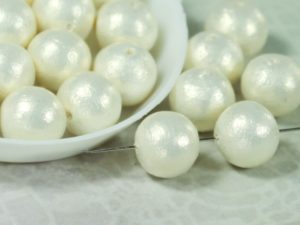
Production method - pressed cotton and pearl coating (mother-of-pearl varnish). Differs in affordability. One of the main distinguishing characteristics is the rough surface of the stone. This is one of the best imitations of pearls, because in this way you can get the formation of absolutely any shade, shape, size. Given the light weight of cotton pearls, massive jewelry is usually created with it: beads, necklaces, necklaces, because in this case they are very easy to wear.
Baroque or baroque pearls
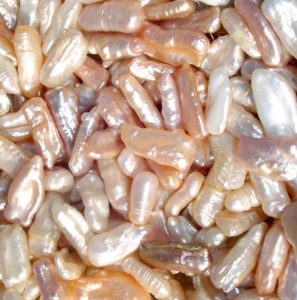
This includes all stones of a bizarre, imperfect shape. Such pearls can be both natural and cultured. Since the quality of a pearl is also assessed by its shape, the ideal shape is completely round, without bulges and even minor transitions.
But baroque is distinguished by its non-standard form. But this in no way negates its beauty and superiority. These are unique stones that also find their application in the jewelry industry. In addition, there are cases when such formations are valued much more than perfectly even pearls.
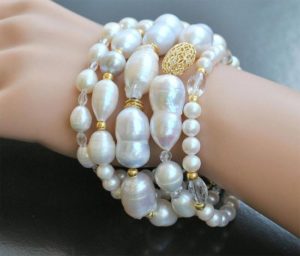
Among the Baroque pearls are found in the following forms:
- oval;
- cross;
- ring;
- wand;
- pear;
- cylinder;
- petal;
- blurry figurines.
From a design point of view, this is an ideal solution, since for classic products you need to select the same sizes of pearls, and this sometimes requires a long wait. But for design work, this is a wonderful find, because you can create something truly inimitable and unique. And this can be done precisely thanks to the baroque.
Varieties of pearls in shape
In addition to the fact that pearls are distinguished by origin, they are also classified by shape.
Blister or bubble
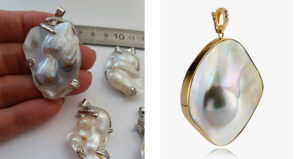
From the name it is already clear what a pearl is. This is a unique stone that seems to be inflated from the inside and has bubbles on the surface. It is quite difficult to create jewelry with such an education, but if a jeweler gets down to business, then completely unique products are obtained.
Keshi or grain
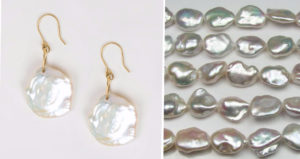
As a rule, such pearls have a flattened shape and look more like a button or a round plate. Ideal for creating classic rings, these pieces look sober and elegant and naturally attract everyone's attention.
Kasumi
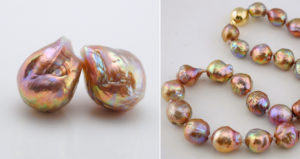
Iridescent, amazing pearls that first of all attract with their hue. If you've ever seen what a drop of gasoline looks like in water, then this is the case. Grown mainly in Japan, sizes vary from 8 to 13 mm.
conch
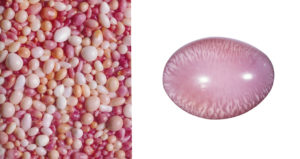
It is formed in the gastropod mollusk Strombus gigas. These are very rare shells, respectively, these pearls are highly valued in the jewelry field. The main palette is pale pink, yellow, brown and white. Of course, the most expensive and rare is a pink shade with varying degrees of saturation. This is one of those cases where such a look is completely impossible to imitate, because it has a unique structure: it is like a velvet, silky. Another difference is that conch does not have a mother-of-pearl layer.
Souffle
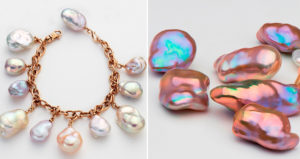
To get such pearls, some manipulations are carried out with the shell. When a pearl is removed, a sac is left inside the mollusk where it was formed. Some dry earthy material is added there. Gradually, it swells and stretches it. Thus, a new life begins inside the shell ...
Distinctive characteristics of the soufflé:
- hue brightness;
- rainbow overflow;
- bright shine;
- strength.
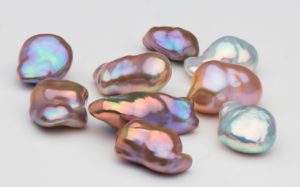
Many mistakenly believe that such a formation does not have hardness. But this is not so at all. It takes a lot of effort and a hammer to break it.
Abalon
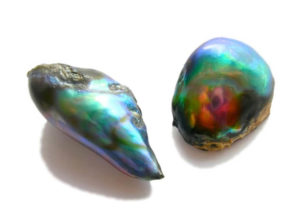
One of the rare and expensive types of pearls known to people. In nature, there is not a single Abalone pearl of perfect shape and with an absolutely smooth surface. All of them have a bizarre shape and a bright, unusual shade. Sometimes when creating jewelry with such a stone, jewelers even use a piece of the shell to which it is attached to create a truly unique masterpiece of a pearl product.
Koh hog
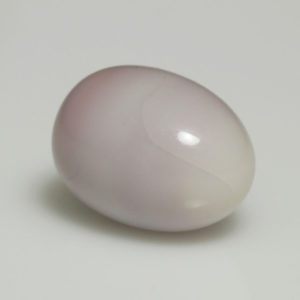
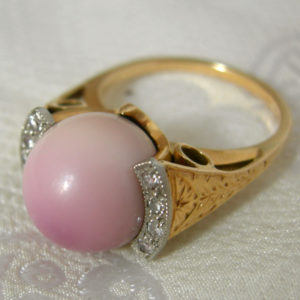
An absolutely unique pearl that does not have a luster. Rather, the shine is present, but it is matte, muted. Gently lilac and purple round or teardrop-shaped pearls are quite rare. The chance of finding such a stone is less than one in a million. A product with this variety is a unique creation, which is simply priceless in its essence.
These are not all varieties that are known to the world. We talked only about the most popular types of pearls, which are classified both by origin and shape. In any case, pearl jewelry is a classic of the genre that almost every woman dreams of having in her collection.
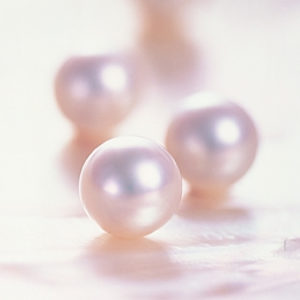
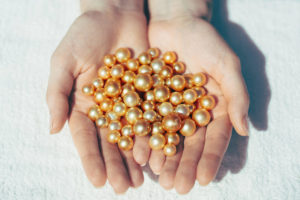
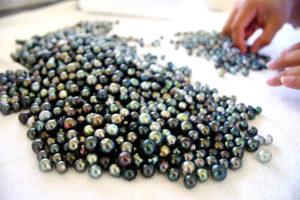
Leave a Reply